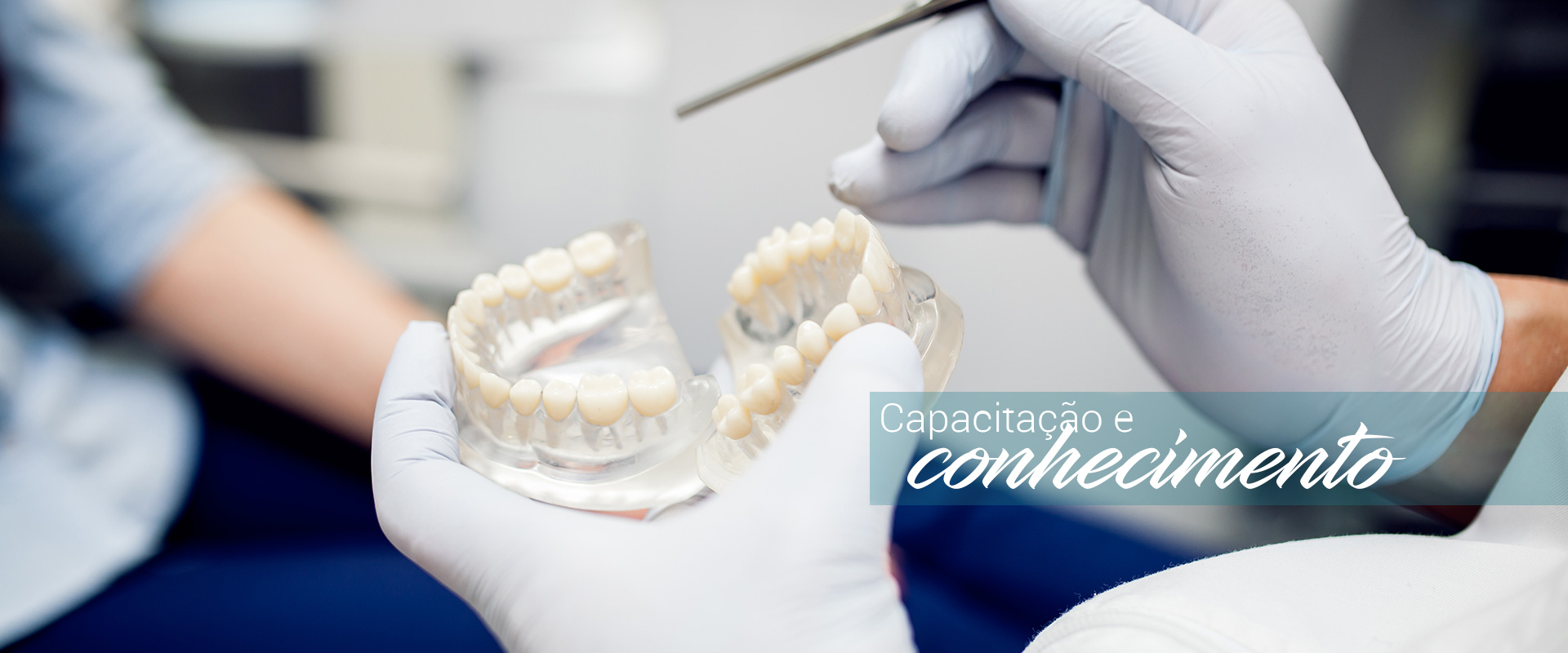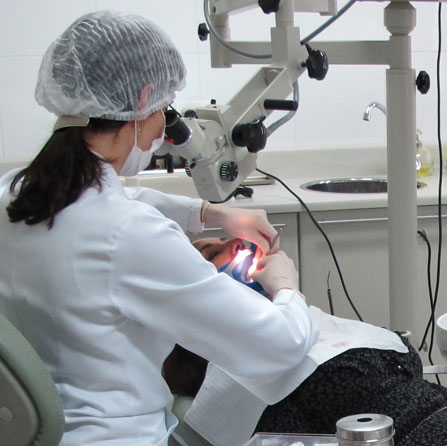
Endodontics (Root Treatment)
Endodontic treatment is the removal of a dental tissue that lies in the innermost part of the tooth, both in the dental crown and in the root. This tissue is called dental pulp and can be "alive", healthy or not, or may be "dead" (necrotic).
Endodontic treatment must be done: 1) As a result of a painful or traumatic episode requiring emergency treatment; 2) When, during a periodic checkup, through radiographic examinations, a periapical lesion is discovered (at the end of the root); or 3) when it is part of the planning of a dental prosthesis or Oral rehabilitation.
The treatment time varies according to the tooth, which can present from one to four channels to be treated; And it also depends on the pulp condition (living pulp or not). In addition to these factors, it should also be taken into consideration the particularities of each patient, which involve irregular dental anatomy, such as very curved and/or atresia channels, calcified channels, oral opening, dental contamination (if the tooth was Open or not) and the general condition of the patient's health.
On the other hand, the updated specialized professional benefits from a large technological range, such as apical locators (which assist in the measurement of dental length), rotating instruments (abbreviation of treatment), microscope Dental (which allows perfect viewing of the channels), etc.
By analyzing these factors, the professional may or might not perform endodontic treatment in a single session.
After the treatment endodontic the tooth does not hurt, but can happen the patient get the tooth sore during the first 72 hours due to prolonged dental manipulation. This sensitivity can be eliminated by the medication indicated by the professional.
The endodontic treatment does not weaken the tooth, which weakens the tooth is the loss of dental structure caused by the caries that generated the need to treat the channel.
The tooth should quickly receive a definitive restoration, at the risk of fracture or recontamination of the canal, whether it is a prosthetic restoration or not. In most cases the need for a restoration.

Privacity Policy
In respect to our customers this site does not disclose situations such as the "before and after" of the treatment. If there is an interest in treatments that involve aesthetics, dentures, prosthesis on implants, dental implants or bone grafts, we have several cases (case files) with the before and after, documented in the clinic itself, which will be shown to the patient in Evaluation. It is important to note that the clinical cases are individual, so for each situation there is a restorative resolution. The indication of the type of prosthesis and aesthetic resolution for each patient depends on the quantity and quality of the structures available, as well as the organic response to the planning imposed for each case. All the texts of the specialty link are compilations and simplified adjustments of specific articles and books in the area.
Friendliness, professionalism, confidence and agility
